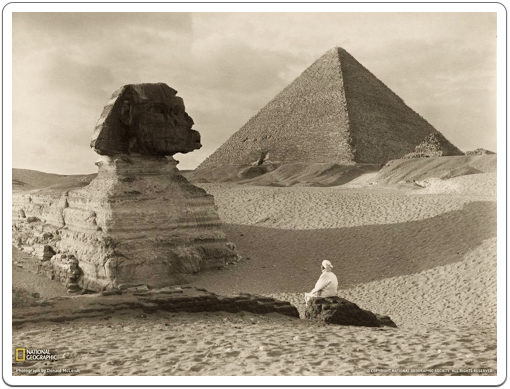The Dream Stela between the forelegs of the Great Sfinx at Giza.
The Dream Stela is a rectangular stone with a rounded top, that was set up between the front legs of the Great Sphinx at Giza.
Although the monument purports to date to the early years of the reign of Thutmosis IV of the 18th Dynasty, there are errors and irregularities in orthography that are inconsistent with this date and type of monument. It is possible that the text is an attempted restoration of a damaged original that was dated to Thutmosis IV, or that the entire monument is of a later date altogether and was intended as an attempt to enhance the importance of the Great Sphinx.
The top part of the stela shows the king, on the left and on the right oriented towards the centre, bringing an offering to the Sphinx. For practical, esthetical and relgious reasons, the Sphinx has about the same size as the king. This meant that the Sphinx, in real life much bigger and higher than a human being, had to be displayed as if it were lying on a podium, decorated with the recessed panelling motif known as serekh.
The text below this offering scene, tells the story of a young prince, the future Thutmosis IV, fell asleep in the shadow of the Great Sphinx after a hunting expedition in the desert.
In his sleep, the god Harmachis, believed to have been represented by the Sphinx, appears before the young prince, and promises to raise him to the throne, in return for the prince freeing his statue from the sands. Unfortunately, the text breaks off soon after the prince woke up, but the fact that Thutmosis IV did indeed rise to the throne means that this story had a happy ending.

The Great Sfinx, partially buried in the sands, in a picture taken in 1928 by Donald McLeish. This must have been just about how young prince Thutmosis found the Sfinx when he took a rest in its shadow after a hunting trip in the nearby desert.
Source: National Geographic.
The translation of what remains of the story is provided here. The translation is my own and is based on the text publication of Kurt Sethe, Urkunden des aegyptischen Altertums IV, volume 19.